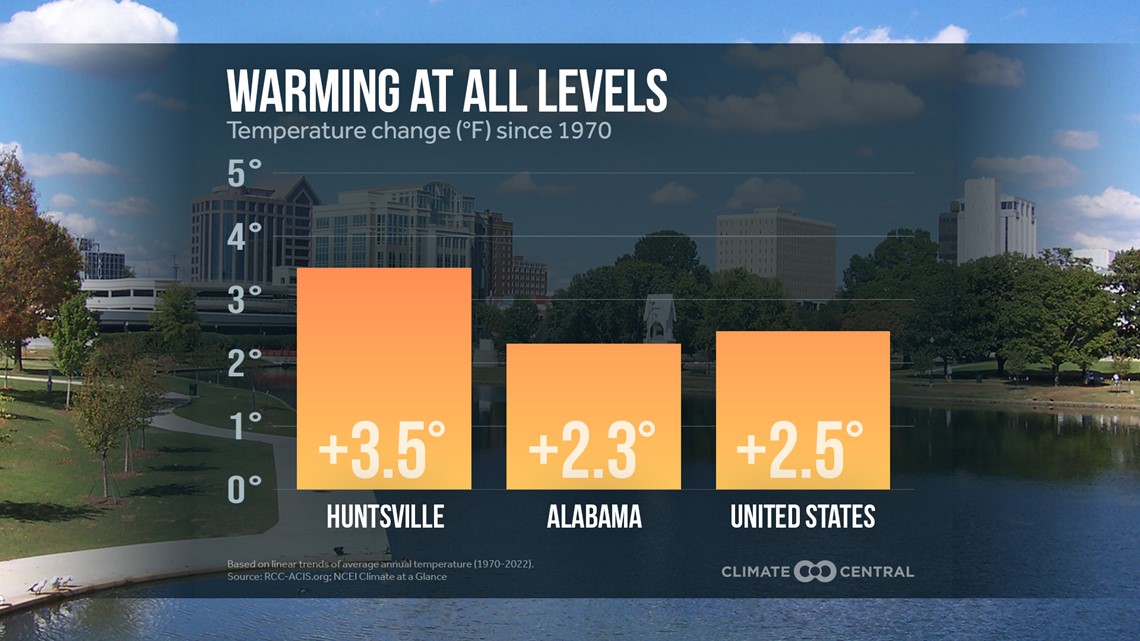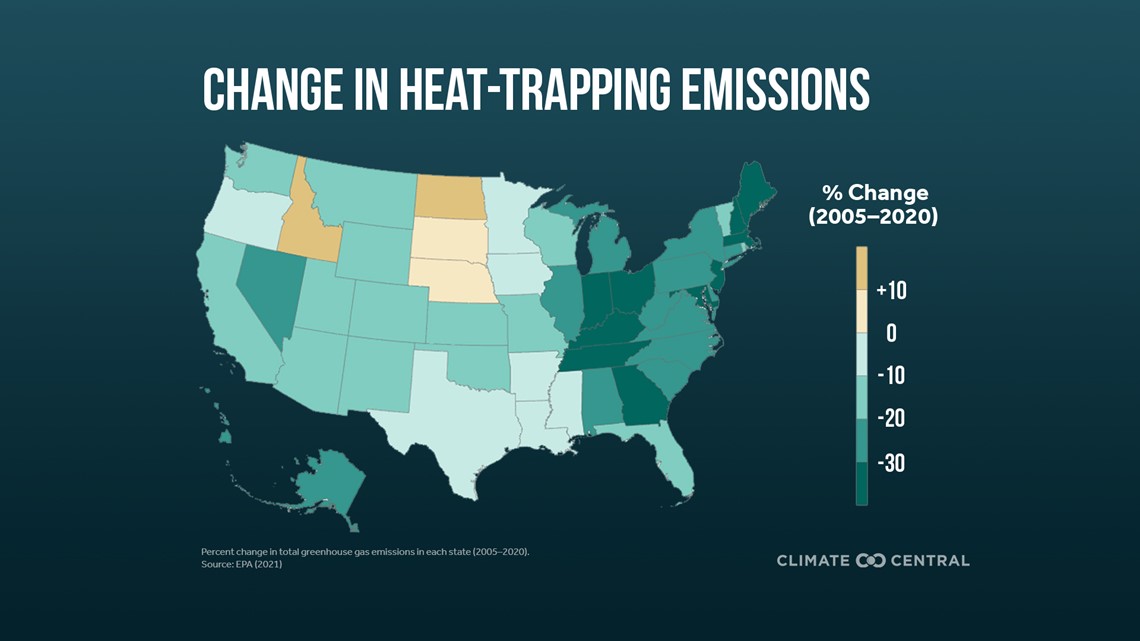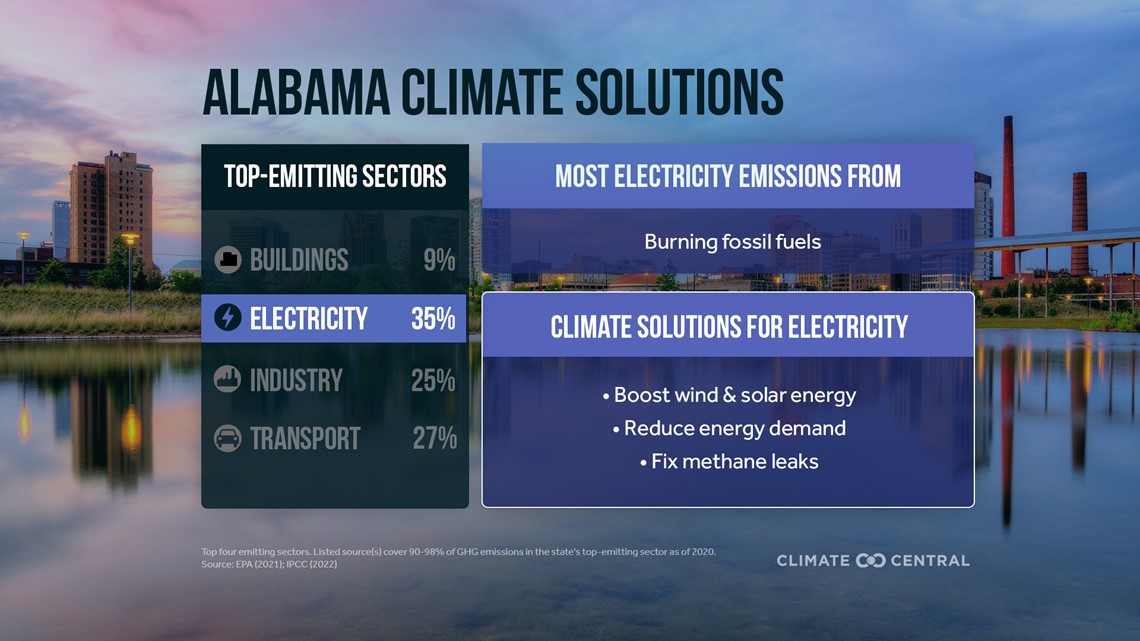HUNTSVILLE, Ala. —
KEY CONCEPTS
- All 50 states and at least 241 U.S. cities have warmed since the first Earth Day in 1970.
- 176 U.S. cities have warmed by at least 2°F since 1970.
- The fastest-warming city was Reno, Nev. and the fastest-warming state was Alaska.
- Continued warming can harm people and ecosystems, but we have many options to cut carbon pollution from energy, transportation, agriculture, and more.
- States have already reduced heat-trapping emissions by an average of 19% from 2005 to 2020. But this pace is not fast enough to meet national targets by 2030.
- We review solutions available to advance toward state and national climate goals.


Earth Day is an opportunity to celebrate progress and to focus on current challenges, including climate change. Concentrations of CO2, methane, and other heat-trapping gases in the atmosphere have increased globally due to a range of human activities - causing temperatures to rise and putting people and ecosystems at risk.
How have United States temperatures been affected?


U.S. warming since the first Earth Day
Climate Central analyzed average annual temperature trends in 243 U.S. cities, 49 states (see Methodology below: Hawaii was excluded), and the entire nation since 1970, finding that:
- The contiguous U.S. is 2.5°F warmer today than it was in 1970: This is very close to the global warming limit of 2.7°F (1.5°C) that 196 countries, including the U.S., have agreed to pursue.
- All 50 states analyzed by Climate Central have warmed since 1970: The 49 states analyzed by Climate Central have warmed by 2.6°F on average since 1970. Alaska was the fastest-warming state by far, due to its high latitude. Hawaii is also warming. The latest NOAA State Climate Summaries found warming across the Hawaiian islands since 1950. Honolulu has warmed 2.6°F since 1950; since 1975, the city has consistently been above the 1951-1980 average.
- 241 U.S. cities have warmed since 1970: 176 cities (72% of 243 analyzed) have experienced at least 2°F of warming. Many of the fastest-warming locations were in the Southwest - a region vulnerable to droughts and heat extremes, which are likely to worsen with climate change.
Fastest-warming cities and states
Based on the increase in annual average temperature from 1970 to 2022:


U.S. climate action
Every tenth of a degree of avoided warming counts toward a safer future.
- Warming Across Generations shows how much warming younger generations in 242 U.S. locations could experience over their lifetimes if carbon pollution either continues, or is cut rapidly
The U.S. has set national goals to reduce emissions 50% (compared to 2005 levels) by 2030, and to reach net-zero emissions by 2050.
Although the U.S. has reduced emissions by about 1% per year since 2005, this pace is not fast enough to meet national targets by 2030. Reaching these targets requires action at the state and local levels.




Climate solutions in every state
Beyond national climate goals, 22 states have official clean energy goals, and 33 states have Climate Action Plans.
States have already educed their greenhouse gas emissions by 19% on average, from 2005 to 2020, but rends vary among states and accelerated action is needed to meet state and national targets.
Three ways to cover climate solutions in your state:
1. Climate Solutions in Every State reviews options to quickly reduce emissions in each U.S. state's top-emitting sector.
2. WeatherPower: 2022 in Review shows that the U.S. produced enough wind and solar energy to power the equivalent of 64 million homes - reflecting a surge in the country's low-carbon energy capacity that's projected to continue.
3. Learn more about solutions for energy, transport, agriculture, and buildings that can bring the U.S. closer to net-zero emissions by 2050 - and ensure a safer future for younger generations.

